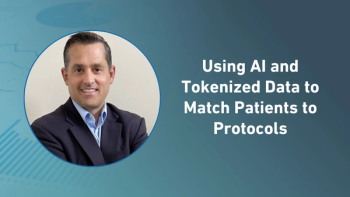
- Applied Clinical Trials-12-01-2019
- Volume 28
- Issue 12
Novel Strategies Advanced in 2019 to Inform Drug Development and Review
A view of the notable policy strategies advanced in 2019 to boost drug development and review.
FDA has worked with industry, patient advocates, and policymakers over recent months to further explore and clarify policies for devising and utilizing methods for accelerating and streamlining clinical research. These approaches aim to facilitate studies involving very small patient populations (even just one) to further the development of treatments for rare diseases, as well as to reduce unnecessary testing and clinical trials to advance more quickly therapies likely to benefit greater numbers of individuals.
By most measures, the biomedical research community achieved notable successes this past year in the new-drug development arena. Biopharma companies tested, and FDA approved, multiple new drugs and biotech therapies, as further discoveries in genomics and research methods continued to bear fruit. Even if 2019 approval numbers don’t set new records, the list includes important breakthroughs, such as Novartis’ gene therapy Zolgensma, Vertex’s triple combo for cystic fibrosis, multiple cancer treatments, and new drugs for migraine, light-sensitivity, Parkinson’s disease, pneumonia, rheumatoid arthritis, tuberculosis, and urinary tract infections. The steady rise in new-drug applications has made it difficult for the Center for Biologics Evaluation and Research (CBER) to keep pace, while the Center for Drug Evaluation and Research (CDER) formally reorganized its Office of New Drugs (OND) to better assess and process a growing volume of breakthrough submissions requiring special attention.
Under its new structure, OND will have more offices and divisions better aligned to assess therapies for related diseases and conditions. In addition, new administrative offices will manage operations and policy development affecting all divisions, a strategy for achieving more uniform evaluation of innovative trial designs, product development plans, and approval decisions. OND leaders hope this will provide needed expertise for evaluating less familiar research approaches without compromising standards for assessment of safety and effectiveness.
Broader evidence
FDA and sponsors continued to consider ways to more fully utilize real-world evidence (RWE) and real-world data (RWD) in identifying patients for clinical research, providing comparators in certain trials, and tracking postapproval effectiveness and safety. There was visible support for broader access to health data from electronic health records and from widening use of “wearables” that track patient activities in real time. While useful in identifying rare conditions and measuring new indications, these approaches also raised concerns about data reliability and patient privacy.
The importance of soliciting and evaluating patient perspectives in developing study protocols, designing clinical studies, and evaluating results continued to gain importance, as patient representatives played visible roles in FDA evaluation of new research approaches and proposed therapies. This development remained particularly important for discovering new treatments for orphan conditions, often involving very small patient populations, diverse endpoints, and limited knowledge of disease progression and impact. FDA sought to foster a more cooperative approach to designing and conducting clinical trials for rare conditions, with an emphasis on tapping patient perspectives on the most important impacts and measures of meaningful change from treatment. The agency also supported methodological approaches for assessing burden of disease and to develop clinical outcome assessments (COAs) able to inform on how clinical trials can better measure patient experience, such as improved functionality or pain from migraines or in children.
Related efforts aimed to better target potential therapies to patients likely to benefit through further assessment of underlying genetic or molecular links to disease. Research experts from FDA, industry, and patient organizations supported the use of master protocols to study multiple therapies under a common infrastructure. There was more discussion of utilizing a new N-of-One pathway for academic researchers to identify treatments for individual patients, as gene therapy and antisense oligonucleotides promise to increase opportunities to tailor therapies to specific mutations.
A main challenge for FDA is to clarify and establish its framework for regulating the field of regenerative medicine that promises to develop new cell and gene therapies able to repair or replace damaged or malfunctioning tissues, cells, and organs. Industry experts emphasized the need for regulatory standards for conducting clinical trials on these drugs in the face of hundreds of unregulated, independent clinics promoting unapproved stem cell treatments. CBER continued to grant the regenerative medicine advanced therapy (RMAT) designation to many sponsors looking to conduct shorter, smaller trials to bring promising therapies to market. But they also emphasized the difficulties in managing a soaring number of proposals for innovative therapies in the face of limited staff and resources.
Jill Wechsler is the Washington Correspondent for Applied Clinical Trials.
Articles in this issue
almost 6 years ago
How Do Regulatory Intelligence and Operations Envision Technology?almost 6 years ago
News Notesalmost 6 years ago
Next-Generation Focus in Immuno-Oncologyalmost 6 years ago
Labeling Challenges From EU Annex VIalmost 6 years ago
Unleashing New Insights from Toxicology Studiesalmost 6 years ago
Overcoming Transportation Barriers to Trial Participationalmost 6 years ago
Applied Clinical Trials, December 2019 Issue (PDF)almost 6 years ago
It Costs What to Do That?almost 6 years ago
Updates on Drug and Device Regulatory Reform in Chinaalmost 6 years ago
Beyond Hard Outcomes: The Next Era in Heart Failure R&DNewsletter
Stay current in clinical research with Applied Clinical Trials, providing expert insights, regulatory updates, and practical strategies for successful clinical trial design and execution.






.png)



.png)



.png)
.png)
